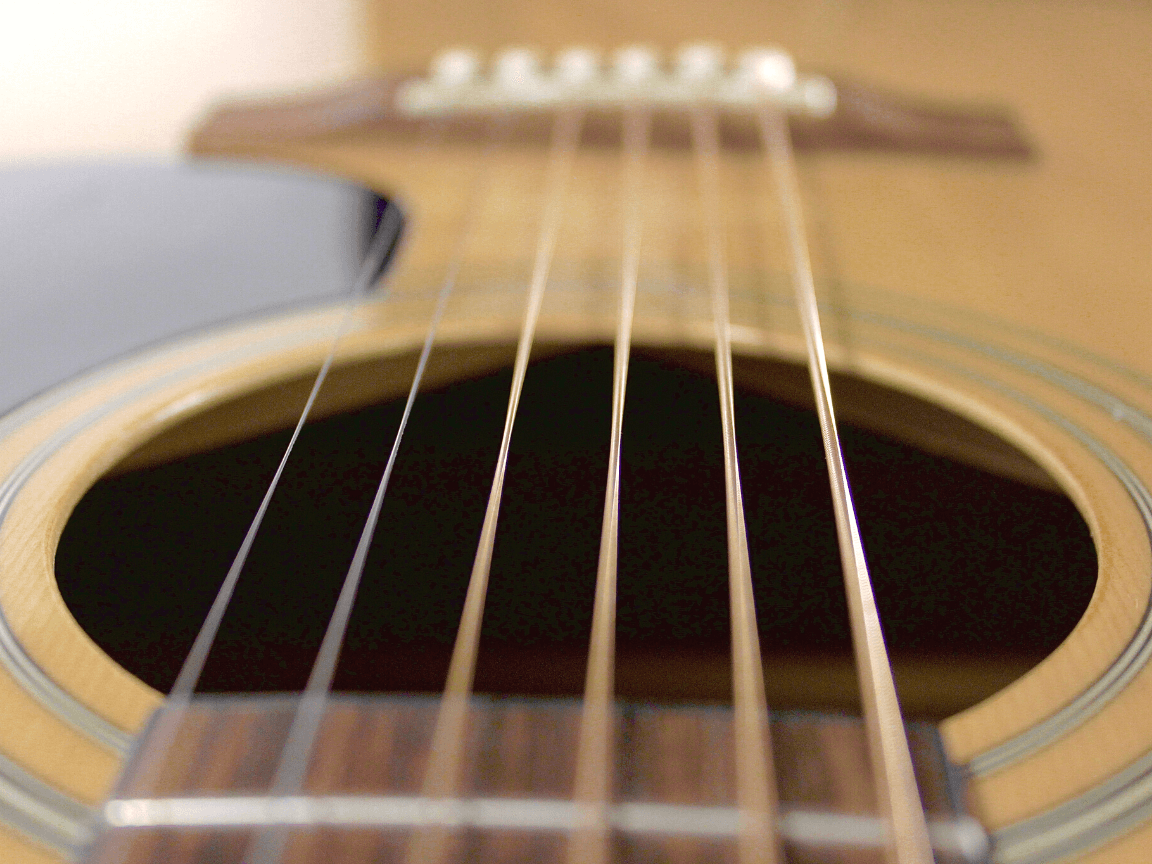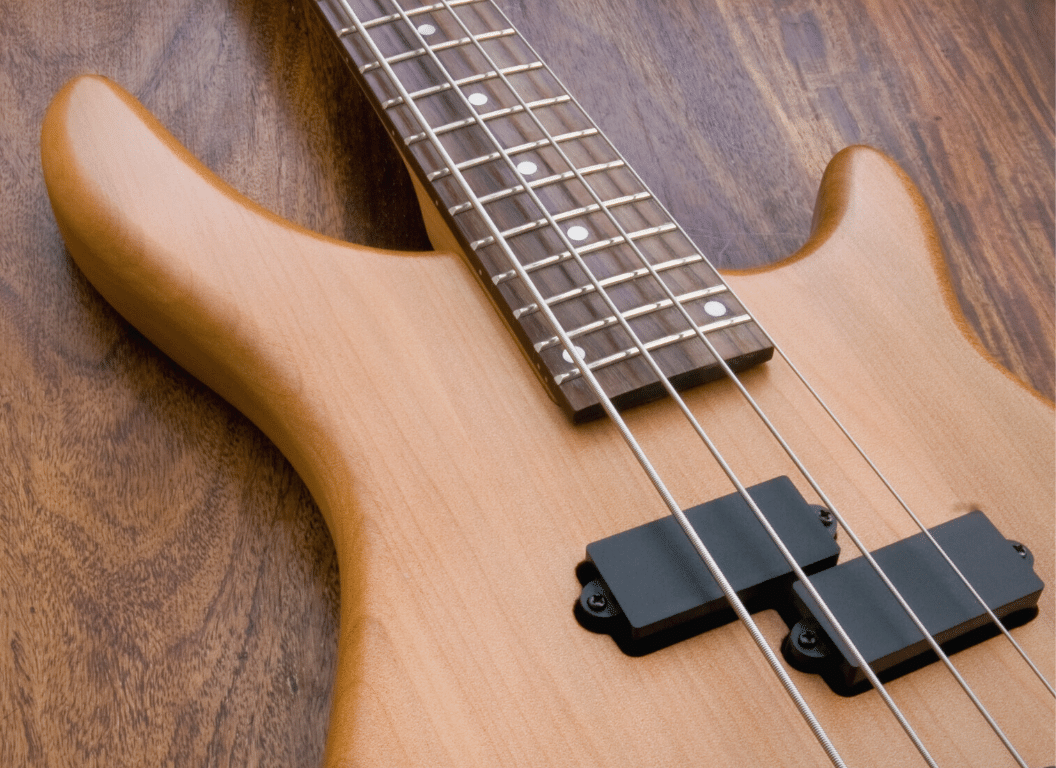Have you ever wondered how the strings on your guitar are made?
From the first moment you press down on the strings, they become an integral part of your musical experience.
But before they can be used to make beautiful music, they must go through a complex manufacturing process that few know about.
In this article, we’ll take a look at how guitar strings are made, from the raw materials used to the intricate winding process.
We’ll also explore the different types of strings available and how they affect the sound of your instrument.
So if you’ve ever wanted to know more about the strings that bring your music to life, keep on reading!
Table of Contents
- How are guitar strings are made?
- Raw Materials
- String Winding
- String Coating
- Final Assembly
- Packaging
- Are guitar strings made of animal intestines?
- Do gut strings sound better?
- Is it true that guitar strings get old if not played?
- What is the best tension for guitar strings?
- Can high tension strings damage the guitar?
- Are high tension guitar strings harder to play?
- Final thoughts
How are guitar strings are made?
Guitar strings are typically made from metal, nylon, or other materials. The metal strings are made from steel, nickel, or other alloys and are wound with further metal wire. Nylon strings are made from nylon filaments, and other materials are made from various synthetic materials. The strings are then cut to the desired length and the ends are looped and secured. The strings are then polished and packaged for sale.
Plus, some manufacturers use a specialized winding process to give their strings a unique sound.
This involves wrapping the metal core of the string with various layers of wire, usually bronze or brass.
What this does is it gives the strings an extra bright tone that many players prefer.
Finally, some manufacturers have begun experimenting with alternative materials like fluorocarbon and polyester for their strings.
These materials are designed to provide a fuller, warmer sound than traditional metal strings.
But overall, it’s a very similar process regardless of what material is used, and most companies keep their specific processes closely secret.
Raw Materials
Raw materials are the starting point for any product, and the selection of the right material is essential for the successful production of a quality product.
Steel, nickel, bronze, and nylon are all materials that are commonly used in the manufacturing process of guitar strings.
– Steel
Steel is the most widely used of these materials, and is known for its strength and durability.
It is used in both electric and acoustic guitar strings and is made up of an alloy containing iron and a few other trace elements.
The steel must be carefully processed to ensure that it has the correct properties for producing a quality product.
– Nickel
Nickel, on the other hand, is a strong and corrosion-resistant metal, and is often used in combination with steel to create a strong and long-lasting product.
It is also known for its bright and clear tone, making it an ideal choice for acoustic guitars.
Although nickel strings tend to be a little harder on the fingers than steel and bronze strings, it is a popular option for many guitarists.
– Bronze
Bronze is a softer metal than steel and nickel, but is still resilient and durable, and produces a warm, mellow tone.
It is usually used for acoustic guitar strings, but can also be used in electric guitars to create a unique sound.
Bronze strings tend to be gentle on the fingers, so they’re a great choice for beginners or players who prefer a lighter touch or simply don’t want to endure the pain of steel strings.
ensure that it has the correct
– Nylon
Nylon has always been a popular choice for classical guitar strings, as it produces a soft and mellow tone.
This is my personal favorite and the one I learned to play on.
Nylon strings are also much easier on the fingers than steel, so if you’re looking for a softer touch then nylon is the way to go.
They will also last longer than steel strings and won’t need to be changed as often since they don’t corrode so easily.
String Winding
Once the raw materials have been chosen, the strings must then be wound.
Wound means that the string is wrapped around a core, and this can be done either manually or mechanically.

The winding process affects the sound of the strings by affecting their tension, resonance, and tone so it’s important to get this part right.
Manual winding is done by hand and requires detailed knowledge of the process in order to get the strings just right.
Nowadays, most strings are wound mechanically, which involves machines that wind the string around a core; this process is done with precision and ensures that all the strings produced have consistent quality.
The number of wraps will vary depending on the desired thickness and tension of the string, as well as its musical purpose.
– Winding Machines
Winding machines are used to wind the strings around the tuning pegs, and the winding process is usually done by hand.
The machines are designed to wind evenly and uniformly, ensuring that the strings have an even level of tension.
Also, they ensure that no part of the string is stretched or twisted while winding, which can affect the sound quality and tuning.
– String Gauges
The strings are usually wound in a clockwise direction, and the number of times the string is wound around the peg is determined by the string gauge.
For example, a light string will be wound fewer times around the peg than a heavy string.

The tension of the strings is also affected by the number of windings, which affects how easy or difficult it is to play.
Additionally, different gauges can produce different sounds, which is why some guitarists prefer certain gauges for specific genres of music.
– String Testing
Once the strings have been made, they are put through a rigorous testing process.
The tests include durability, tone, and tension tests to ensure that they meet the highest standards of quality.
Certain companies also have their own testing processes, such as checking for rust and corrosion resistance.
This is where they make the difference and set the bar for quality control in string manufacturing.
Most manufacturers also use a set of specific machines to test the strings on various guitars, so they can be sure that their strings are suitable for all types of musical styles and their desired tonal qualities.
String Coating
String coating is the process of applying a coating material to a string or wire.
What this means is that certain chemicals are applied to the strings in order to protect them from corrosion, and also to increase their longevity.
This is an important step that all manufacturers must take, as it provides additional protection against rusting and wearing down of the strings.
The coating materials used vary depending on the manufacturer but often include brass or nickel plating.
– Coating Machines
Coating machines are used to apply the coating material to the string and can be used to accurately and consistently coat the strings.
These machines are also specifically designed for string coating, so they can handle the delicate nature of the material and provide a precise application of the coating.
Said machines apply a uniform layer of the coating material over the entire length of the string, ensuring that all parts are evenly coated and protected.
– Coating Process
The coating process begins with the string or wire being placed in the coating machine and then the coating material is applied.
The material is usually heated in order to ensure an even and consistent application, and the temperature can be adjusted depending on the type of material being used.
The process may also involve a few additional steps, such as polishing or surface cleaning before the final product is ready for use.
Additionally, the coating material must be tested in order to make sure it is compatible with the string and will not affect its sound quality.
– Benefits of String Coating
String coating provides several benefits, such as improved physical properties, improved electrical properties, and improved corrosion resistance.
The coating also helps to protect the strings from damage and wear, as well as providing additional longevity.

Also, the coating helps to reduce string noise, which can be distracting while playing and can affect overall sound quality.
In addition, the coating material can also provide a smoother feel when playing, which can be beneficial for some guitarists that prefer a certain type of feel.
Final Assembly
After the strings have been wound and treated with a protective coating, they are ready to be assembled into their final product.
The high-quality materials used in the manufacturing process ensure that each string is able to produce a clear, bright sound when strummed.
The actual assembly of the strings involves placing them on a spool and tying them together in a tight knot.
The strings are then secured to one end of the string spool, and the other end is connected to the tuning peg.
Finally, the strings are tensioned to their desired gauge and tuned, after which they are ready for use on any guitar.
– Ball End Attachment
The final process involved in creating guitar strings is attaching the ball end of the string to the bridge.
The ball end of the string needs to be firmly secured into place so that it does not slip off or break when plucked.

Some strings, however, don’t need a ball end attached, as they are designed to be tied directly to the bridge.
For example, classical guitar strings and some other kinds of specialty strings do not have a ball end.
– Tensioning
One other step in the process of constructing a guitar string is tensioning them.
The tension on the strings affects the sound quality, pitch, and stability of the instrument so it is important to get the tension just right.
To do this, a person will typically use a tuning fork and measure the pitch of the string at different tensions until they find the perfect balance.
Once all of these steps have been completed, a fully functional guitar string is ready to be used on any instrument.
– Quality Control
As I said, this is what makes or breaks a guitar string company or brand.
Their ability to produce a consistently high-quality product is what keeps customers coming back.
And so the quality control process of guitar string manufacturers involves testing the strings for durability, tension, and sound at different stages throughout the manufacturing process.
The strings are then inspected one last time before being packaged and shipped to their destination.
Packaging
In order to sell guitar strings to the public, they must first be packaged.
The packaging of guitar strings can come in various amounts and forms, depending on the manufacturer and type of string.
One of the most common forms is a paper or plastic-wrapped set of six strings encased in a cardboard box.

The packages are designed with descriptions that inform customers about the gauge size, material, and construction of the strings within.
Generally, quality guitar string manufacturers will include information about the packaging process on their website as well.
The packaging process itself is a carefully calculated and highly efficient system to ensure that every set of strings is protected from any damage or exposure during shipment.
Are guitar strings made of animal intestines?
Guitar strings have been around for centuries, and their composition has changed over time.
While modern guitar strings are typically made of metal or nylon, historically, they were made of animal intestines.
Animal intestines were used to make guitar strings because they had the right balance of strength and flexibility.
The intestines were cleaned, stretched, and then twisted together to form the strings.
The strings were then treated with a special solution to make them last longer.
While animal intestines are not used to make guitar strings anymore, they are still used to make strings for some other instruments, such as violins and cellos.
Do gut strings sound better?
Yes, gut strings do sound better than other strings.
Gut strings have a warm, mellow sound that is often preferred by classical guitarists.
They also have a longer sustain, meaning the sound lingers longer than with other strings.
Gut strings also have a very responsive feel, making them easier to control and play.
They tend to be more expensive than other strings, but the sound quality is worth the extra cost.
Gut strings also require more maintenance than other strings, as they need to be kept at a consistent humidity level to avoid cracking.
However, if you take the time to properly maintain them, you will be rewarded with a beautiful sound that no other strings can match.
Is it true that guitar strings get old if not played?
Yes, it is true that guitar strings can get old if not played.
Over time, the strings will start to lose their elasticity and tone, making them sound dull and lifeless.
This is because the strings are made of metal, which is susceptible to corrosion and oxidation.

If the strings are left unused for too long, they can start to rust and become brittle, which can affect the sound of the guitar.
To prevent this from happening, it is important to regularly change the strings, even if you don’t play the guitar often.
It is also important to keep the strings clean and lubricated to help them last longer.
What is the best tension for guitar strings?
When it comes to finding the best tension for guitar strings, it really depends on the type of sound you’re going for and the type of guitar you’re playing.
Generally speaking, lighter gauge strings will produce a brighter sound while heavier gauge strings will produce a fuller, richer sound.
It’s important to note that the heavier the gauge, the more tension the strings will have.

If you’re looking for a more mellow sound, then you should opt for lighter gauge strings.
If you’re looking for a more aggressive sound, then heavier gauge strings may be the way to go.
Ultimately, the best tension for your guitar strings will depend on the type of sound you’re trying to achieve, as well as the type of guitar you’re playing.
Experimenting with different gauges and tensions is the best way to find the perfect sound for your guitar.
Can high tension strings damage the guitar?
Yes, high tension strings can damage a guitar.
The higher the tension, the more stress is put on the neck, bridge, and body of the instrument.
This can cause the neck to warp, the bridge to pull away from the body, and the soundboard to crack.

Additionally, the higher tension can cause the strings to break more easily, which can damage the guitar’s finish.
To avoid damaging your guitar, it’s important to use strings that are the right tension for your instrument.
If you’re not sure what tension is right for you, it’s best to consult a guitar technician.
Are high tension guitar strings harder to play?
High tension guitar strings are generally harder to play than regular strings due to their increased tension.
This increased tension makes it more difficult to press down on the strings and can cause more fatigue in the hands and fingers.
It can also make it more difficult to bend the strings, as the increased tension makes them less responsive than regular strings.

Additionally, the increased tension can make it more difficult to achieve the desired sound when playing lead guitar, as the strings may not vibrate as freely as regular strings.
While high tension strings may be harder to play, they are often preferred by some guitarists due to the increased sustain and brighter tone they provide.
Final thoughts
The process of making guitar strings is truly fascinating.
From the selection of the materials to the winding of the strings, it is clear that a lot of care and attention goes into making sure that each string is perfect.
It is no wonder that guitar strings have been around for centuries and are still one of the most important components of a guitar.
From the novice guitar player to the professional musician, guitar strings are an integral part of the instrument.
With the right strings, a guitar can produce a beautiful sound that can be heard for miles.
It is no wonder that the process of making guitar strings is so interesting and important.

More than 10 years of experience playing and writing about guitars! When not writing, I can be found strumming away some Johnny Cash tunes. Favorite all time guitar is the Gibson Les Paul. #TeamGibson




